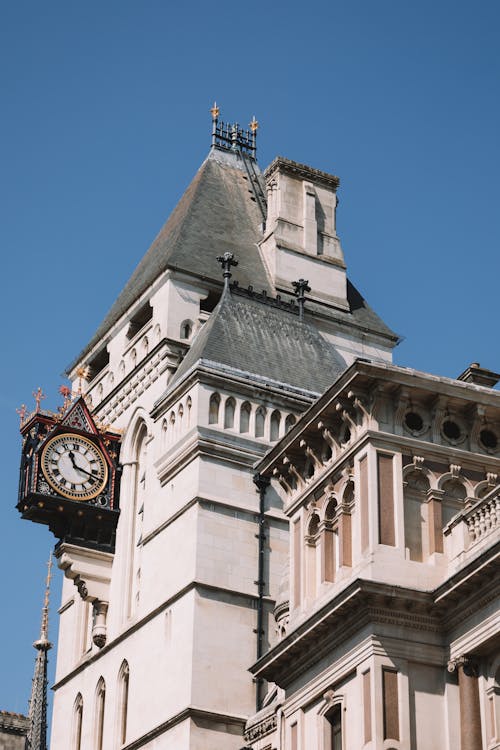Home Improvement October 30th, 2023 | No Comments »
Roof terraces are becoming increasingly popular, mainly due to their many advantages. These roofs are visually appealing, increase social cohesion, and, most importantly, offer a range of different ecological benefits. It is an opportunity for new ecosystems to develop and thrive, it reduces pollution and it helps people to lower their carbon footprint through the insulating properties. Nowhere is the need to be eco-friendly more acute than in large cities such as London. Although various efforts and initiatives have been put in place to lower air pollution and smog, more needs to be done. The following London roof terrace examples are incredibly important in terms of achieving those eco benefits so desperately needed in high-pollution areas.

[Photo courtesy of Joaquin Carfagna/pexels.com]
London Roof Terrace Examples
- 1 Poultry, which is found near Bank Junction. The building itself is reasonably new, having been completed in 1998. The roof of 1 Poultry houses a restaurant and a highly intensive green roof. Various beds are included in the design, which contains shrubs and trees. Furthermore, there is a stunning pergola covered in wisteria and grapes. Crab apples have also been planted in the garden. The roof also has a grass area surrounded by clipped hedges.
- 107 Cheapside, which is in the same district as 1 Poultry, has taken a slightly more simplistic, smaller approach. Rather than having an accessible roof that can be enjoy by guests, it has installed a sedum blanket on the main roof for insulation purposes. Furthermore, at two lower levels, a range of planters have been installed.
- 10 Queen Street Place is another great London roof terrace example. This building is near Cannon Street Station, an area notorious for pollution. On the fourth floor, it has a very large roof area with views of St Paul’s cathedral. It has an intensive green roof that has been made to look like a park. It has substrates, planters, grass, timber surfaces and more. It is a wonderful place to relax and enjoy the views of London.
- 150 Cheapside is at the foreside of St Paul’s, and the balcony of the Stone Gallery actually overlooks the property. It has a very large sedum area and minimal plant equipment. It also has photovoltaic systems for added eco benefits. Furthermore, there is space for planters at a lower level, which is also used for entertainment.
- 201 Bishopgate, which is in the east part of the City of London. It is a brand new building that features not just a green roof, but also a green wall. It uses a mixture of Boston ivy and native ivy. The particular focus for this building was on biodiversity.
These are just a few of the many examples of green roofs in London. It adequately demonstrates how much can be achieved with limited space and how important these developments are in terms of creating clean living solutions. Pollution in London is incredibly high, and these roofs and walls have the ability to significantly reduce that.
[ Tagged In ] Fire Proofing, Roof, Roofing
Home and Living, House and Home May 12th, 2017 | No Comments »
There is always something we need to do to our home to make it better. While we think about improving our home or making it more stylish, we very rarely think about the safety aspect of our homes. There are so many little problems that are potential fire hazards that it’s probably easier for most of us to not think about it. But there are some simple things to do that can cut down the chances of getting a fire at home…

[Photo courtesy of Skitterphoto/pexels.com]
Candles
Between 2009 and 2013, on average there were 25 candle fires per day in the US. Although that doesn’t sound like much, it totaled 86 deaths, 127 injuries, and $374 million in damaged property. So make sure you do the following:
- Keep candles 12 inches away from anything that could burn.
- Use candle holders that are sturdy.
- Blow out all the candles before leaving a room or going to bed.
- Don’t use candles in the bedroom.
Cooking
Hopefully, everyone has some common sense when it comes to cooking, but here are some tips.
- Wear close fitted clothing while cooking.
- Don’t leave food unattended.
- If you get a grease fire, smother the fire in a pan. DON’T put it out with water.
Dryers & Washing Machines
Washers and dryers catch fire because of a failure to clean them.
- Don’t overload the dryer.
- Clean the lint filter after every use, and don’t use the dryer without one.
- Don’t restrict the air exhaust pipe and make sure the outdoor vent flap is open while the dryer is on.
If You Have A Fire…
Firstly, don’t try and be a hero. Call the fire department as soon as you can, but make sure that you get to safety. As fires are such a common hazard, the best idea is to have a plan in mind should this ever occur. Know all your escape routes from your home blindfolded because you won’t be able to see when there is thick smoke. Stay low, and get out as quick as you can because you may only have seconds. Staying as low as possible means you will get the most oxygen out of the air.
After The Fire…
Once the fire has been put out, you will need to stay somewhere else. In the meantime, if you have updated your insurance policy, you will have to put in a claim for all the items damaged. If there are parts of the home that haven’t been damaged, you can hire a restoration company to start the cleanup. There are companies like Pro Restoration who specialize in clearing up homes after house fires and help to restore your property. Once your home is back to its former glory, it’s time to take notes of what potential hazards there are, and minimize them as much as you can.
Preventing a fire is very much about common sense as it is about safety, and in your home, you need to make sure that you are sensible by not obstructing doors, cooking safely, and generally being vigilant.
[ Tagged In ] DIY, DIY Tips, Fire Prevention Month, Fire Proof, Fire Proof Your Home, Fire Proofing, Home Maintenance, Home Tips, House DIY, House Tips

